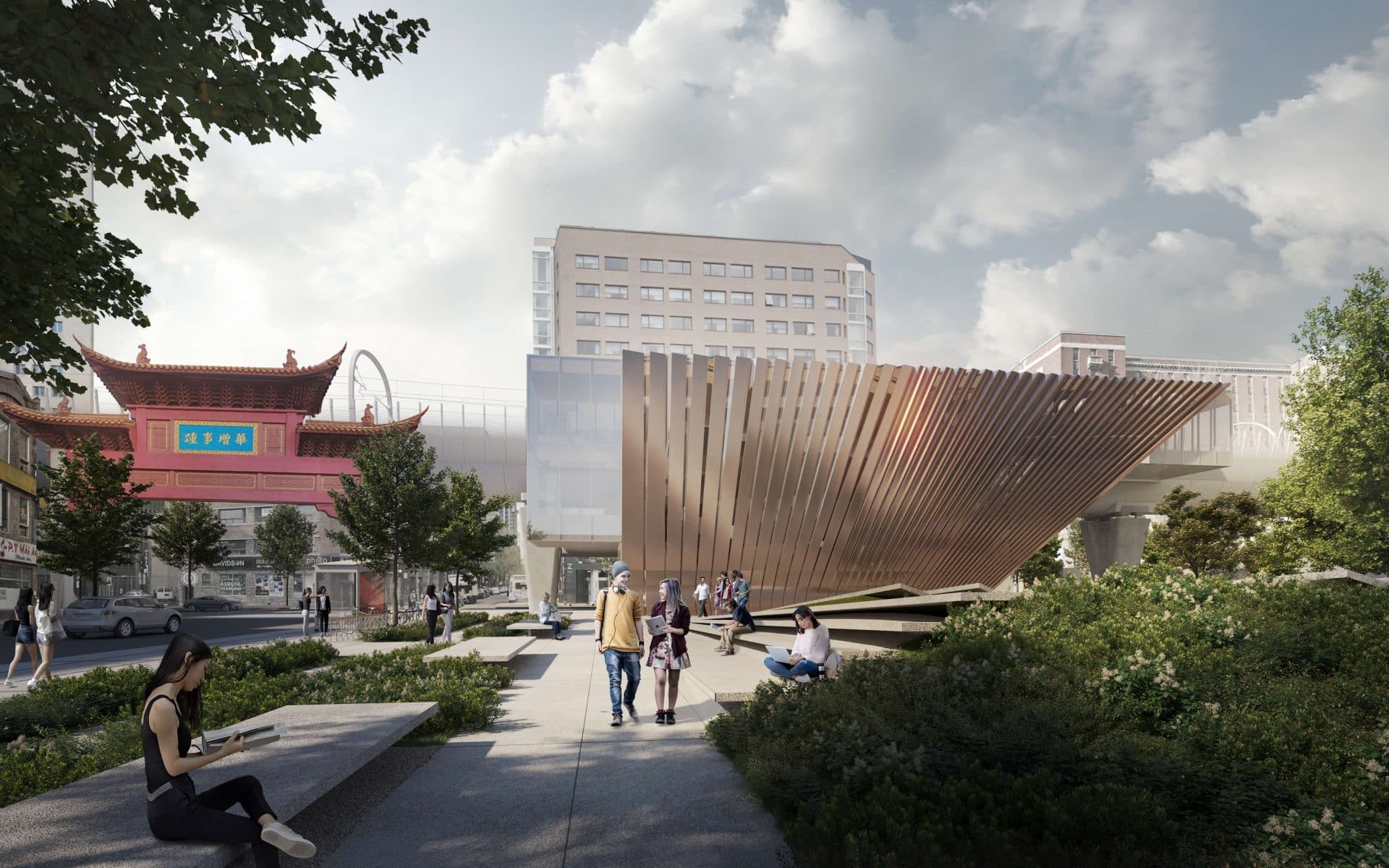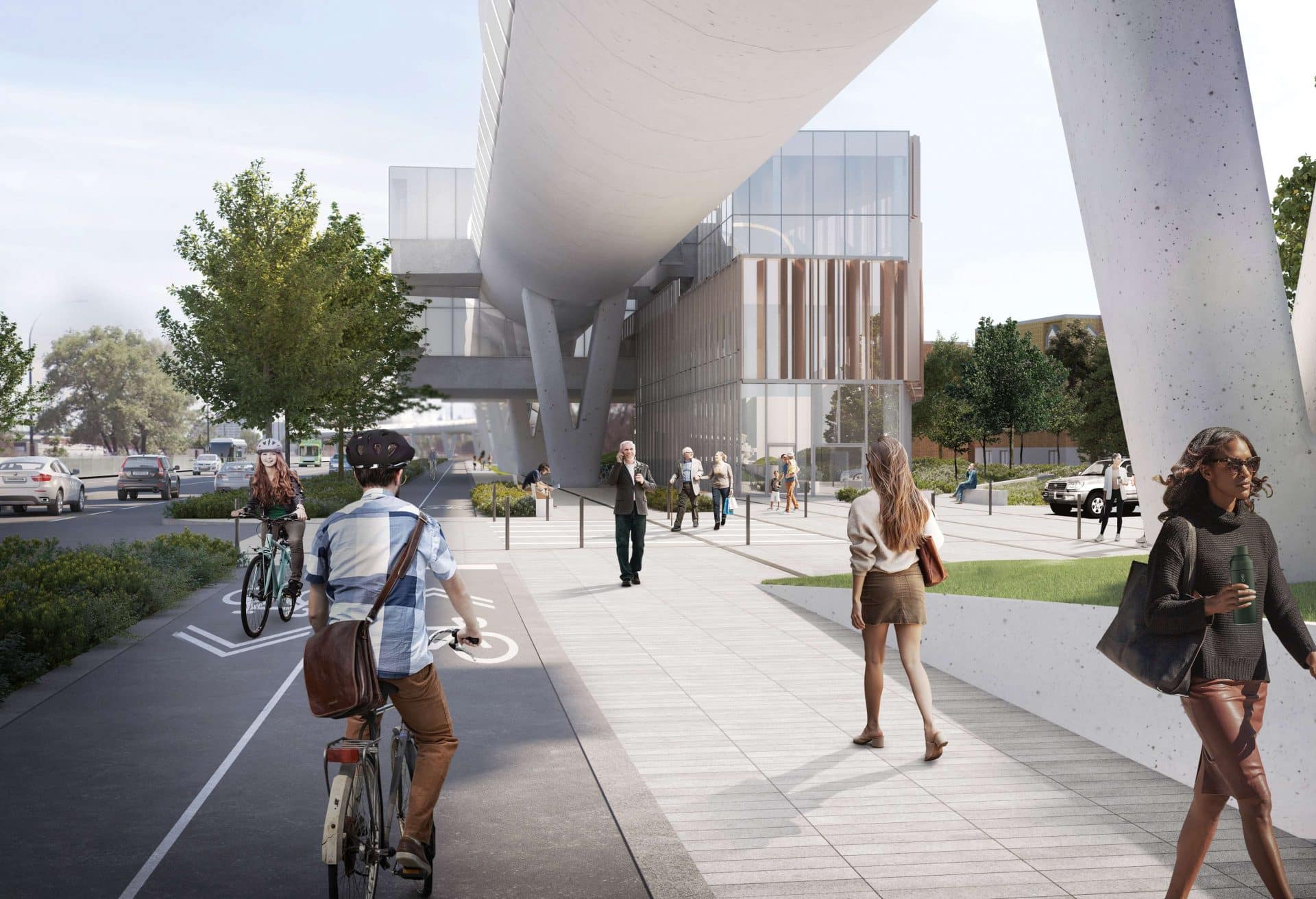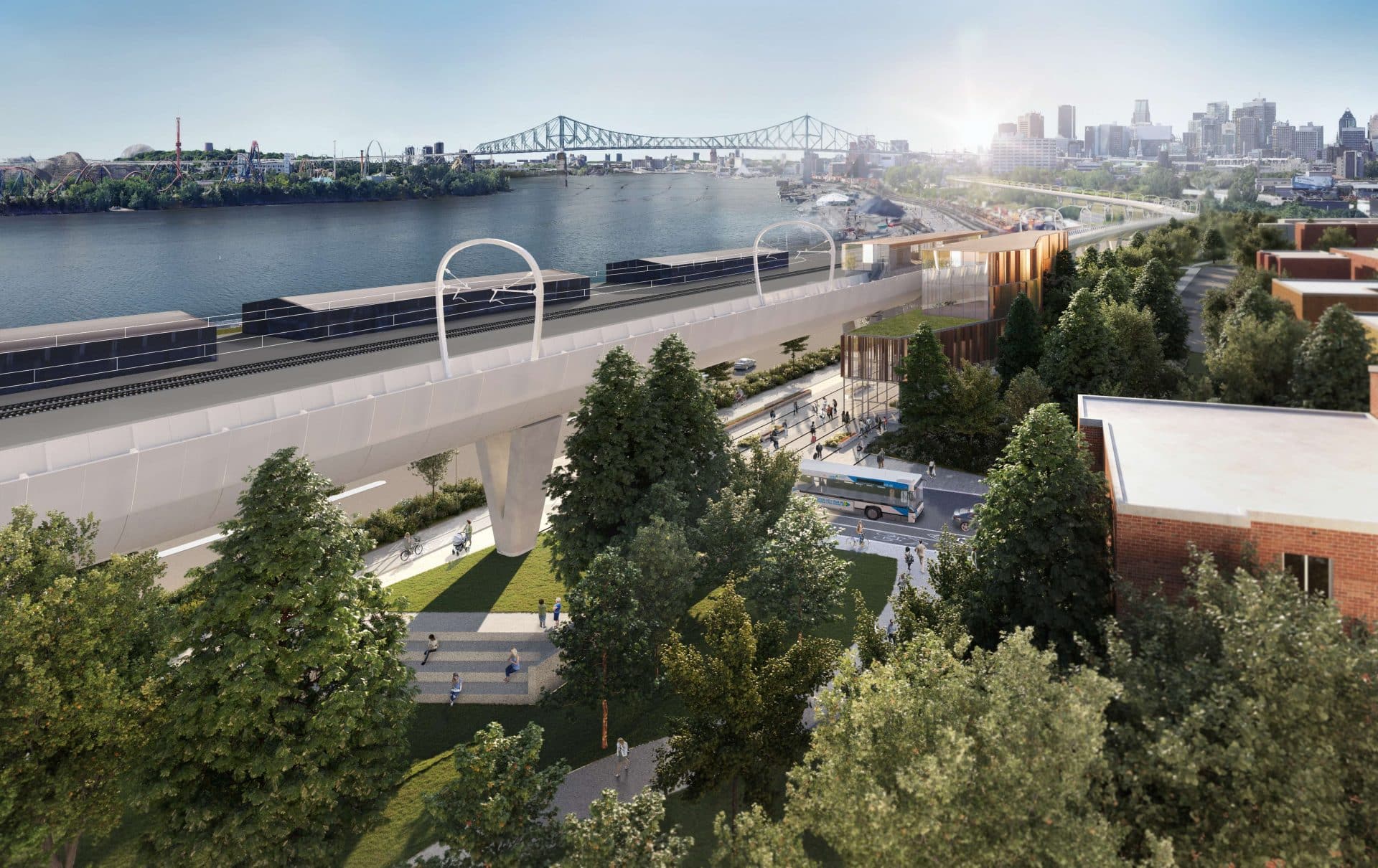Reinventing urban transport with new pathways and perspectives
Client
CDPQ InfraLocation
Montreal, QC, CanadaYear
Unbuilt concept-
Discipline(s)
Architecture
Landscape Architecture
Sustainability
Urban Design
Urban Planning
Reinventing urban transport with new pathways and perspectives
With its expansive series of new landmarks interwoven with the fabric of Montreal, the regenerative infrastructure of the REM de l’Est was designed to be for more than just transportation: It would be a catalyst for positive change and the beginning of a sustainable future of urban health and well-being for the city it serves.
Drafted by a transdisciplinary team of urban planners, architects, landscape architects and urban designers working with the communities it would serve, the project was designed to connect the downtown core to eastern and northeastern Montreal. The system would cross highly diverse cityscapes to offer novel views and angles of the city, but also serve as an exercise in rethinking the road networks of the areas it passed through; to promote accessibility and movement for cyclists and pedestrians, space was made for a continuous bike path linking the east end of the city to downtown, and a series of urban landscaped spaces were incorporated for what was called the Promenade du REM de l’Est.
In order to blend seamlessly into Montreal’s urban fabric and to have minimal impact on the city skyline, the REM de l’Est’s design is a mix of aerial and underground structures with the light and slim design of a viaduct that flow through the city without obstructing views. The rails are grounded by 23 distinct stations that were designed to integrate harmoniously into each of their areas of insertion. Each station is highly contextualized and ranges in character and appearance according to the neighbourhoods it would give rhythm to, as well as ensuring symbiosis between landscape and architecture.
With its interlinked routes and destinations, this concept for the REM de l’Est rethinks Montreal’s urban corridors and is as much an exemplary project for its planning and implementation as it was for its holistic integrative vision. Sustainably-minded, communal and daring in its approach, the project represents some of the city’s most celebrated aspects while proposing a unique opportunity: To bring citizens together to explore and take ownership of the city through travel and interconnection.
View the 3D model of the René-Lévesque Drive proposal (in French) +
Watch a short documentary on the architects’ vision (in French) +


